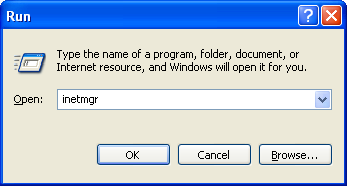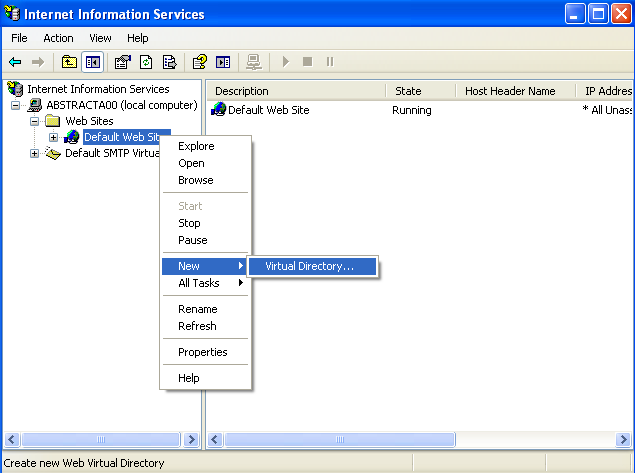Difference between revisions of "How to create a virtual directory in IIS"
(New page: Category: Installation Guides A virtual directory is a directory server that is not within the usual publishing directory, ie a directory that does not depend on C: \ Inetpub \ wwwroo...) |
|||
| Line 1: | Line 1: | ||
[[Category: Installation Guides]] | [[Category: Installation Guides]] | ||
| − | A virtual directory is a | + | A virtual directory is a server's directory that is not within the usual publishing directory, i.e. a directory that does not depend on C: \ Inetpub \ wwwroot but that it can be accessed through the web server as if it were within that directory. |
| − | To access IIS | + | To access IIS just type an address like this: http://localhost. This will go to the directory C: \ Inetpub \ wwwroot, which is called directory. The virtual directory is accessed with something like http://localhost/virtual_directory, but, the directory could be anywhere else on your hard drive, e.g. C: \ my_pages. |
| Line 16: | Line 16: | ||
[[Image: inetmgr.png | center]] | [[Image: inetmgr.png | center]] | ||
| − | To define a virtual directory, you can press the right mouse button on the website and select "New > Virtual Directory ...". Then a wizard that will guide us step by step through the process. | + | To define a virtual directory, you can press the right mouse button on the website and select "New > Virtual Directory ...". Then a wizard that will guide us step by step through the process will appear. |
[[Image: inetmgr_create.PNG | center]] | [[Image: inetmgr_create.PNG | center]] | ||
| Line 22: | Line 22: | ||
The first step of the wizard asks the alias or logical name that we give the directory (for example AjaxSample). <BR> | The first step of the wizard asks the alias or logical name that we give the directory (for example AjaxSample). <BR> | ||
The second step asks us the physical location of the directory on your hard disk or local network (eg: c: \ Applications \ AjaxSample \). <BR> | The second step asks us the physical location of the directory on your hard disk or local network (eg: c: \ Applications \ AjaxSample \). <BR> | ||
| − | Finally, we request that we want to assign permissions to that directory. Read permission and the execution of scripts (eg ASP) are usually | + | Finally, we request that we want to assign permissions to that directory. Read permission and the execution of scripts (eg ASP) are usually enough for most cases. |
[[Image: inetmgr_permision.PNG | center]] | [[Image: inetmgr_permision.PNG | center]] | ||
| − | Once the wizard is | + | Once the wizard is finished, the virtual directory is created and can be accessed via the alias we've selected. |
Revision as of 08:37, 28 March 2011
A virtual directory is a server's directory that is not within the usual publishing directory, i.e. a directory that does not depend on C: \ Inetpub \ wwwroot but that it can be accessed through the web server as if it were within that directory.
To access IIS just type an address like this: http://localhost. This will go to the directory C: \ Inetpub \ wwwroot, which is called directory. The virtual directory is accessed with something like http://localhost/virtual_directory, but, the directory could be anywhere else on your hard drive, e.g. C: \ my_pages.
Virtual directories can be mapped to another directory on our hard drives or even to another directory on another computer on the network.
Create a virtual directory
First access the IIS Manager (Run-> inetmgr), or from Control Panel -> Administrative Tools -> Internet Information Server
To define a virtual directory, you can press the right mouse button on the website and select "New > Virtual Directory ...". Then a wizard that will guide us step by step through the process will appear.
The first step of the wizard asks the alias or logical name that we give the directory (for example AjaxSample).
The second step asks us the physical location of the directory on your hard disk or local network (eg: c: \ Applications \ AjaxSample \).
Finally, we request that we want to assign permissions to that directory. Read permission and the execution of scripts (eg ASP) are usually enough for most cases.
Once the wizard is finished, the virtual directory is created and can be accessed via the alias we've selected.


